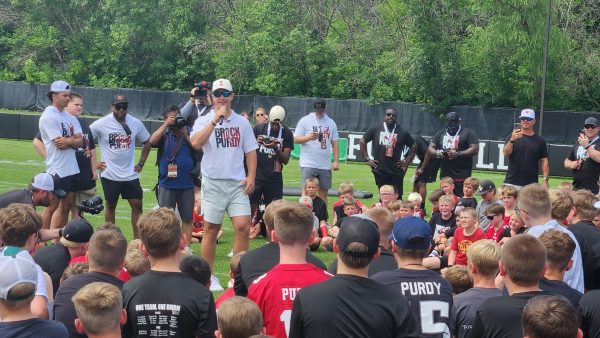Athletic trainers have big presence in Cyclone sports
December 10, 2012
One mile into the 2012 NCAA Cross-Country Cham-pionships in Louisville, Ky., true freshman Crystal Nelson started having trouble breathing.
Nelson, winner of the Big 12 Newcomer of the Year award, has both asthma and vocal cord dysfunction, a condition where a person’s vocal cords can swell up.
Hindered by her breathing, Nelson crossed the finish line in 154th place and then collapsed unable to catch her breath.
Soon after Nelson fell, ISU graduate assistant athletic trainer Matt Mills, athletic trainers from host team Louisville and ISU teammates crowded around her telling her to take slow, deep breaths before giving her oxygen and her inhaler.
From cross-country to basketball to football to soccer and more, an ISU athletic trainer or other trainers can be found at all Cyclone sporting events, at home games and meets as well as those away.
“There are nine full-time athletic trainers and then we have four graduate assistant athletic trainers, and then over at the student health center there’s two physical therapist/athletic trainer dual credentialed employees,” said Tim Weesner, ISU assistant director of athletic training.
Weesner is a graduate of Iowa State’s athletic training education program as well as the athletic training student program where he worked with the football, soccer and men’s basketball teams.
Weesner also went to
graduate school at Iowa State and then worked at Arizona State for three years before returning back to Ames four years ago.
A career in athletic training appealed to Weesner on multiple levels.
“Originally, it was just kind of an interest where I found out there was a profession that was really based in medical science and the injuries and illnesses you see in sport and activity,” Weesner said.
“And then you also still get to help people, it’s kind of something I’ve always enjoyed doing.”
The number of athletic trainers found at any given Cyclone sporting event fluctuates and is based largely on the risk and severity of injury for the given sport.
Using those same factors and taking into account the experience of each individual athletic trainer, decisions are made about where sport graduate assistants and staff members are assigned.
“The majority of the staff has been here for a significant amount of time, and so there hasn’t been a lot of change in [which sport people are working],” Weesner said.
Athletes don’t see their sport’s athletic trainer only when they’re hurt like they might with a physician or physical therapist.
They are in constant communication with one another.
“We have 41 guys on the wrestling team, and I see each of them pretty much every single day, the entire school year,” Weesner said.
Athletic trainers walk that fine line of having a
professional relationship with student-athletes that allows for open communi-
cation between the two and not a friendship, which might hinder their decision-making abilities.
Coaches will also keep in contact with their team’s athletic trainer and also receive treatment from them.
“[The athletic trainers’] goal is to get everyone back out as quickly as possible and as healthy as possible,” said Corey Ihmels, ISU track and field and cross-country coach.
“So you work hand-in-hand with them to make that possible.”
As for Nelson, disappointed by her finish at the national meet, she said the whole experience opened her eyes.
“I really need to focus on getting this figured out, so that way this won’t happen again, or I can prevent it,” Nelson said.
Nelson isn’t alone — she will have athletic trainers
to help.
















